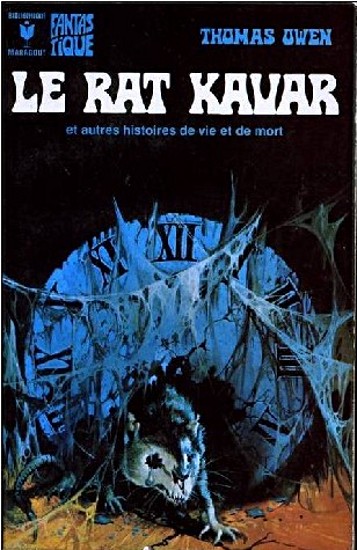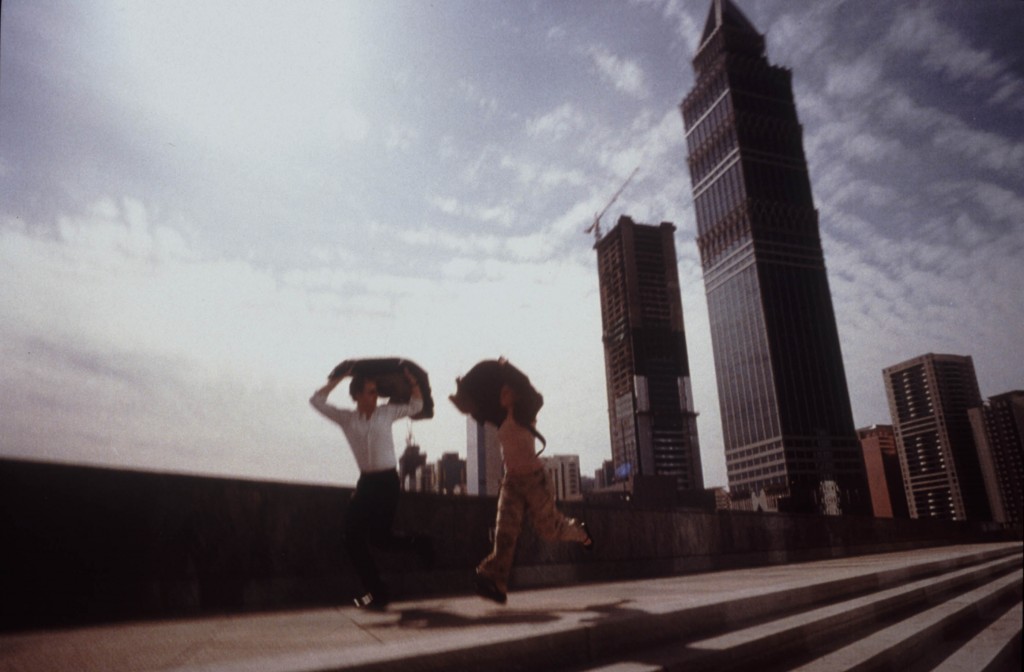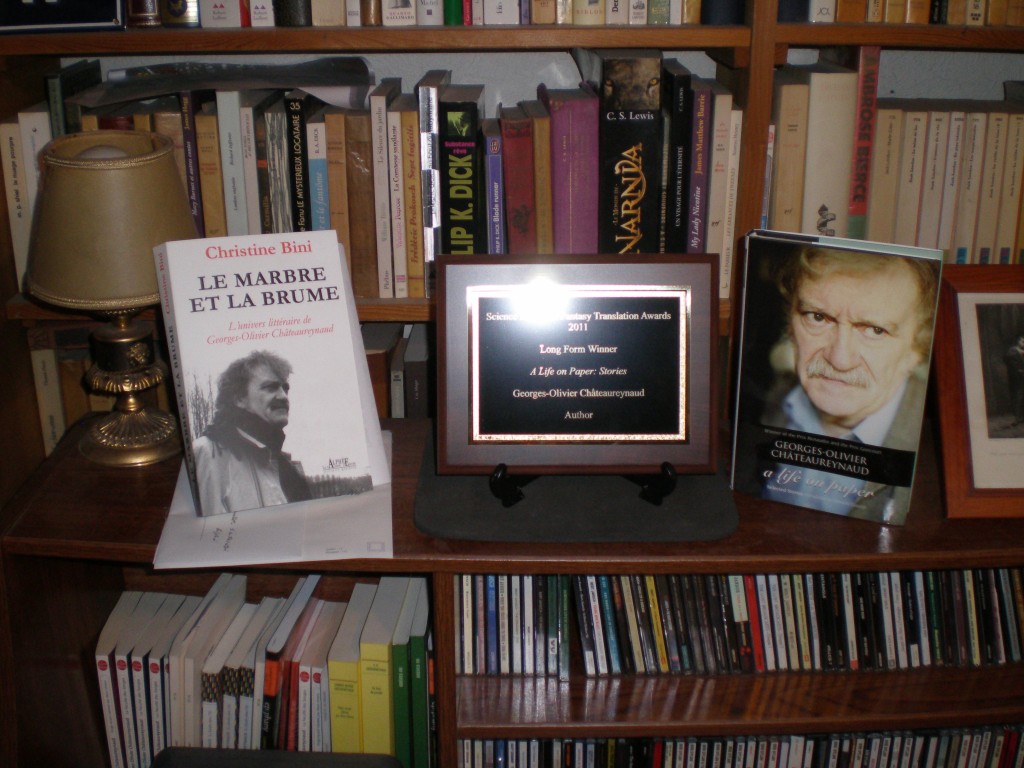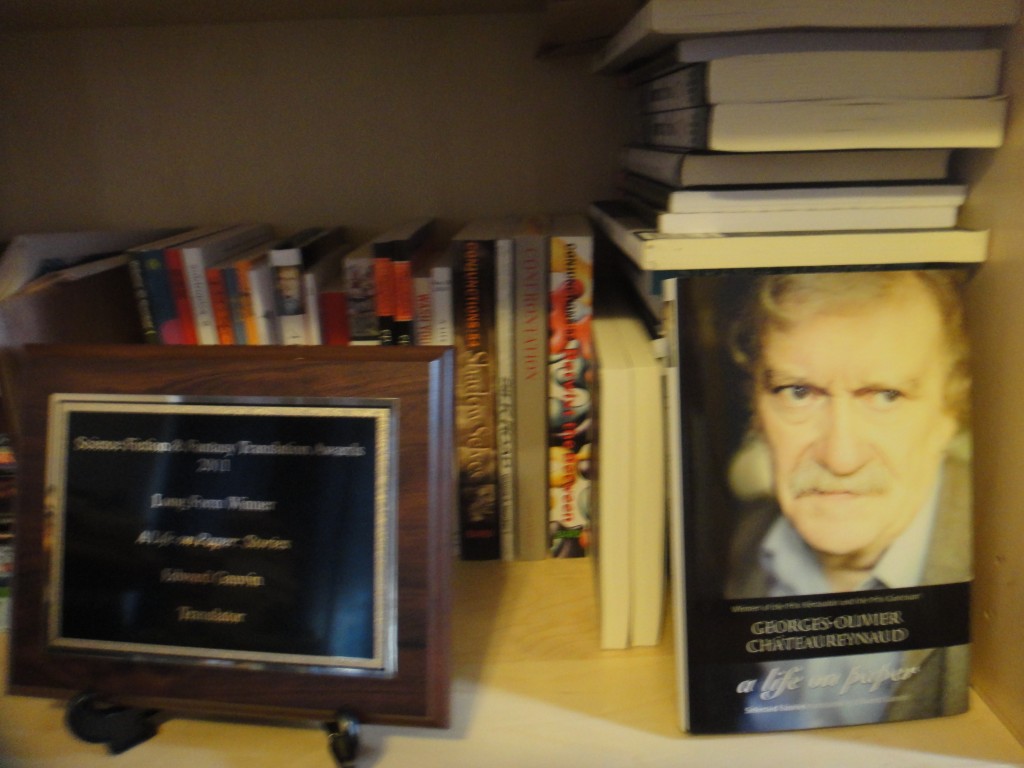September 30th, 2011 § § permalink

Some fine spec fic this week for your auditory delight:
- Nicole Taylor’s story “Ashes” is live in Issue 68 of Bound Off, a monthly literary audio magazine, read in the dulcet tones of the author herself. It starts at 7:18 of a 15 minute podcast. 8 minutes could change your life. You could feel… reborn.
- My translation of Thomas Owen’s “Kavar the Rat” is live in Issue 249 of Pseudopod, the horror short fiction podcast, read by Ideomancer editor David Rees-Thomas. It’s sad, sweet, curious, twisted, macabre, and just a tad perverted. Why not drop by the forums and leave a little note to tell us what you thought of it?
September 24th, 2011 § § permalink
Thoughts on Code 46, continued…

The “standardized future†as a concept—something which, if not yet entirely real, SF has long been reaching for—is technological in the broadest sense (see Billington via Segal: not only “machines†but “structures, those fixed buildings which form the physical foundations of society†Technological Utopianism, 12). Thus it is not a gadget Code 46 proffers but the complete vision of a world, a production design as cohesive in its way as that of Menzies’ Things to Come, not manufactured but cobbled together from existing architectures and locations. The presentation of a piecemeal future, rather than one of whole cloth, is a measure of cultural difference between the two eras in which these films were made. “‘Found’ spaces†(Code 46 Production Notes, 6) in Dubai, Shanghai, Kuala Lumpur, Hong Kong, London, and Jaipur are fused together in a
“‘creative geography’, often matching the exterior or exit of a building in one well-known city with the entrance or interior of a building in a different city. “We thought that the most interesting thing to do,†says production designer Mark Tildesley, “would be to try to fool the audience by taking the most interesting bits from each location. So you’d have the impression that you were walking out of a door in one city, but you’d actually end up walking out of it into completely different place, somewhere else entirely.â€
The net effect of this assembly is to emphasize the homogeneity and interchangeability of an aesthetic we have come to qualify as futuristic. Social critics have long bemoaned the visual monotony common to sites of commerce (malls, office parks, skyscrapers) and public transit (airports, subway cars and stations). Jacques Tati mocked the universal anonymity of modernity with a series of nearly identical travel posters in Playtime, and Ken Kalfus humanized consumer desire in an age of mass production with the playful Calvino tribute “Invisible Malls†(Thirst, 147-153). Indeed, it is almost as if one mall were all malls, one lobby led to all lobbies, and we might pass unremarked from one to another. Splicing these urban environments together construes a contiguous transcontinental urban space whose unifying trait, besides impersonality, is privilege. Producer Andrew Eaton notes the “contradictory architecture†and curious juxtapositions to be found in modern cities like Shanghai and Dubai (C46PN, 6), which came to be reflected in the film’s politics: wasteland and metropolis, poverty and modernity, Reservation and Brave New World. Although distinct, geographically disparate cities are named in the film—a Shanghai that looks like Dubai, a Seattle that looks like Hong Kong—the network of cities known as “inside†functions as a unified first world, a global high future, as if to prove that urbanity according to the theories of Rem Koolhaas were not only feasible, but in a way already here, lacking only the system the movie posits to connect them and hermetically exclude undesirable social elements. » Read the rest of this entry «
September 20th, 2011 § § permalink
So, this fall I’ve been lucky enough to have Henry Jenkins let me into one of his graduate seminars. I’ve been an avid follower of his blog since visiting MIT in late 2007, so imagine my joy, on getting in to USC last year, at finding he’d moved there.
This particular class, Science Fiction as Media Theory, has a dream reading list. The stated aims are “looking primarily at science fiction texts (mostly literary) as ways of thinking through the implications of media change” and “looking at media theories for the implicit utopian or dystopian claims they make and for the ways they have drawn on metaphors from science fiction.”
Responses to weekly reading are posted on a class discussion board accessible only to those enrolled. I’d considered cross-posting my thoughts here, and still might, but in the meantime, I’ll be going ahead and posting parts of my first paper, which examines an overlooked 2003 movie I’ve always liked, Code 46.
Directed by Michael Winterbottom and written by Frank Cottrell Boyce, Code 46 (2003) is a SF-inflected retelling of Oedipus with a double-helical twist (so to speak). However, the film’s more lasting impact may lie in the near future it posits than in its plot. In look and language, Winterbottom and Boyce create a future collaged from disparate parts of the present, which serves to update the hoary SF concept of “the standardized future†and, more subtly, to critique contemporary social and technological trends.
Utopian or dystopian, science fiction—twinned at birth with a technological dream of universal automation—has often posited a future of uniformity. In whatever future is pictured, everything will be of a piece. This is because we will have superseded inefficiency (perhaps at the cost of humanity), because we will have harmonized the paraphernalia and developmental paces of various technologies, and because images of the future brought to us by science fiction are the ultimate form of advertising. As John Berger notes, “The publicity image, which is ephemeral, uses only the future tense.†(Ways of Seeing, 144). That table will go with these chairs in the glass room overlooking the city, and we, whether executive or drone, will be in matching attire. This was for a long time the case in SF.
These days, the future is less monolithic. No more does it beckon, our millennial fate, like Kubrick’s enigmatic menhir, but comes into being by dribs and drabs. » Read the rest of this entry «
September 13th, 2011 § § permalink
Author…

and translator:

Thank you, Association for the Recognition of Excellence in Science Fiction & Fantasy Translation!
September 8th, 2011 § § permalink
- My essay on the Belgian political impasse from a literary viewpoint, “The Year of Living Mildly,” is now live at the Fall 2011 issue of The Quarterly Conversation. Here’s a quote: “I can’t say that after a year I know to define Belgitude, but like Justice Potter Stewart and pornography, I know it when I see it.”
- The essay accompanies my translation, also at QC, of Yves Wellens’ story “In Tempore Semper Suspecto,” a bit of canny speculation first published in 2007 that only seemed all the more prescient when the government stalemate in Belgium began in April 2010. Here’s a quote: “An emergency session of Parliament was called on the evidence of unverifiable rumors and unfounded assertions.”
- Thierry Horguelin takes time on his blog Locus Solus to plug the latest issue of Birkensnake, featuring selections from his chapbook The Night Voyager, and offer an exceedingly kind and uncalled-for thanks to his translator (me). Here’s a quote: “J’ai toujours pensé que le plus beau cadeau, pour un écrivain, consistait à être traduit dans une langue qu’il connaît, de manière à pouvoir enfin se lire comme un autre.” Horguelin’s Quebec-based publisher L’Oie de Cravan also gives the issue a nice nod on their blog (scroll down to the paragraph under “En tête”).
- Nicole Taylor’s eerie and delicate short-short of Pandora and postapocalypse, “Last Boots on the Ground,” is live along with the Summer 2011 issue of The Puritan. Here’s a quote: “Yesterday, I opened The Little Prince and it fell to pieces in my hands.”



